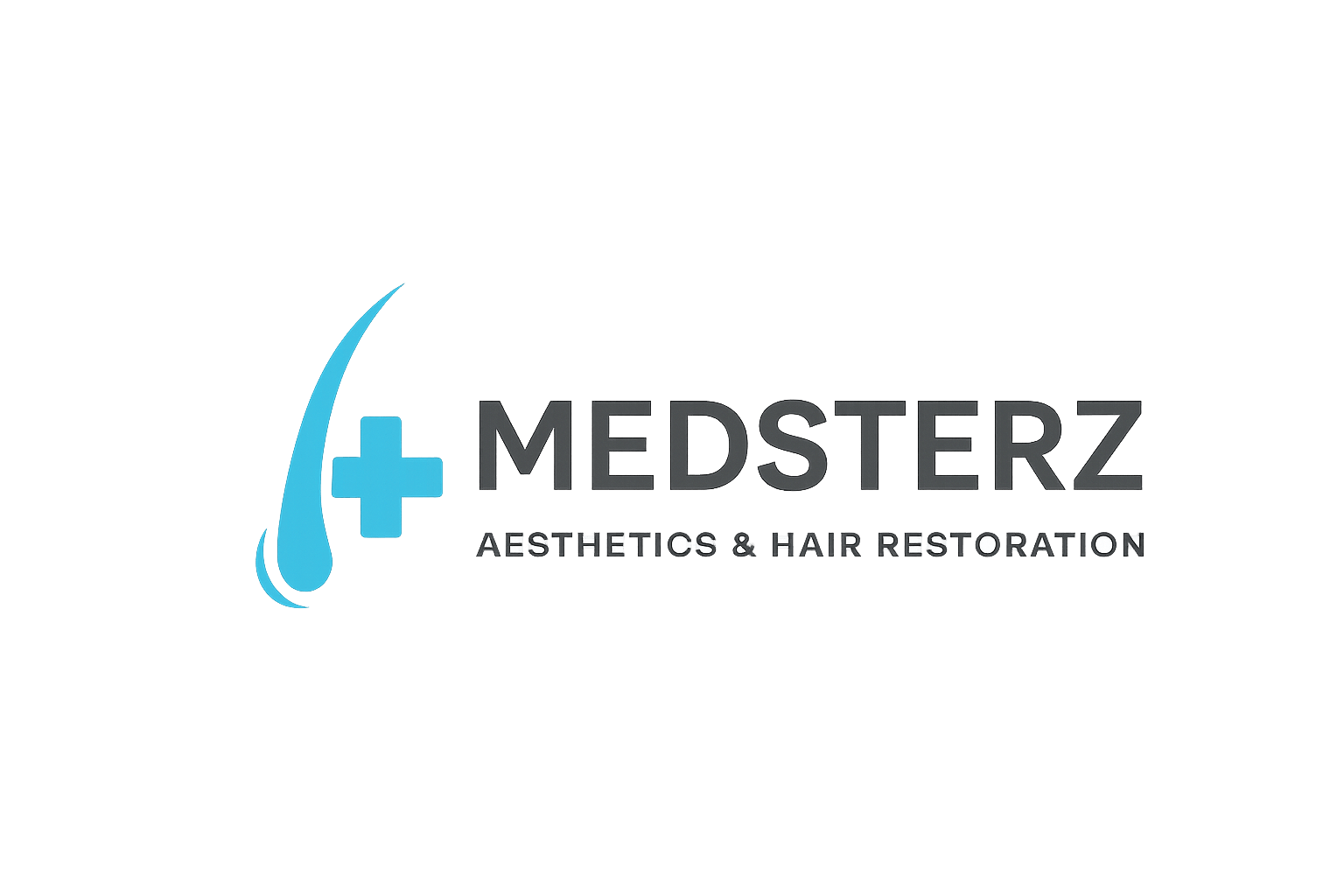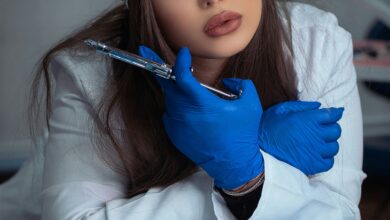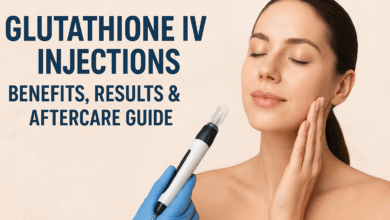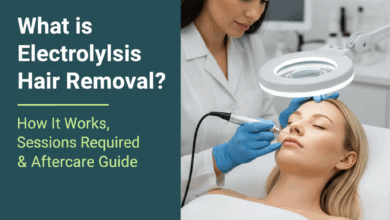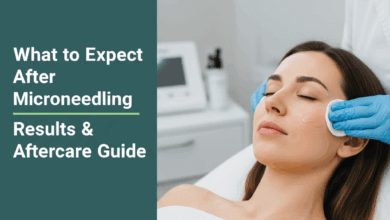Chemical Peel vs Laser Resurfacing – Which Works Better for Skin Rejuvenation?
A 2025 dermatologist-approved guide comparing chemical peels and laser resurfacing to help you choose the best treatment for glowing, youthful skin.
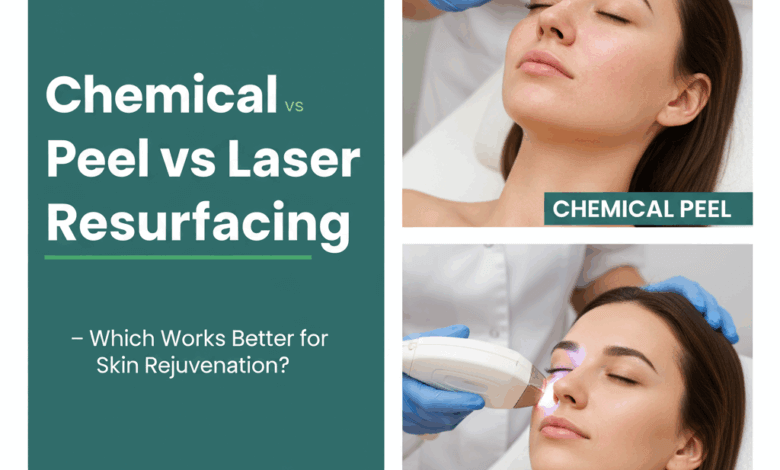
Introduction
When it comes to skin rejuvenation, two powerhouse treatments dominate the aesthetic world — chemical peels and laser resurfacing.
Both aim to improve skin tone, texture, and clarity, but they work in very different ways.
At Medsterz, we break down the science behind each treatment, their benefits, recovery, and which one is right for your skin type and concerns in 2025.
1. What Is a Chemical Peel?
A chemical peel is a non-invasive skin exfoliation treatment that uses controlled chemical solutions (like glycolic acid, salicylic acid, or TCA) to remove dead skin cells.
It promotes cell turnover, boosts collagen, and reveals fresh, radiant skin underneath.
Types of Peels:
-
Superficial peels: Mild acids (e.g., glycolic, lactic) for glow and uneven tone.
-
Medium-depth peels: TCA or Jessner’s solution for pigmentation and fine lines.
-
Deep peels: Phenol peels for severe wrinkles or sun damage.
💡 Best for: Dullness, mild acne scars, uneven tone, and pigmentation.
2. What Is Laser Resurfacing?
Laser resurfacing uses light-based energy to remove damaged outer skin layers and stimulate collagen production in deeper layers.
There are two main types:
-
Ablative lasers (e.g., CO₂, Er:YAG): Remove surface skin and heat deeper layers.
-
Non-ablative lasers (e.g., 1540 nm, 1064 nm): Stimulate collagen without peeling the top layer.
💡 Best for: Deep wrinkles, acne scars, sun damage, and sagging skin.
3. How They Work – The Science Behind Each
| Feature | Chemical Peel | Laser Resurfacing |
|---|---|---|
| Mechanism | Uses acids to dissolve old skin cells | Uses laser light to vaporize damaged tissue |
| Depth of Action | Superficial to medium | Superficial to deep (customizable) |
| Collagen Boost | Mild to moderate | High collagen stimulation |
| Downtime | 1–5 days (superficial peel) | 5–10 days (ablative laser) |
| Pain/Discomfort | Mild tingling or stinging | Local anesthesia often used |
| Results | Gradual glow and smoothness | Dramatic tightening and resurfacing |
4. Chemical Peel – Pros and Cons
✅ Advantages:
-
Quick and affordable
-
Minimal downtime (especially for light peels)
-
Treats pigmentation, acne marks, and dullness
-
Can be done every 4–6 weeks
⚠️ Limitations:
-
Results are gradual
-
May require multiple sessions
-
Not suitable for very sensitive or severely damaged skin
5. Laser Resurfacing – Pros and Cons
✅ Advantages:
-
Superior collagen stimulation
-
Improves deep wrinkles, scars, and loose skin
-
Long-lasting results
-
Customizable for each skin concern
⚠️ Limitations:
-
Higher cost
-
Longer downtime (especially CO₂ laser)
-
Requires trained professional and strict sun protection afterward
6. Which Treatment Works Better for You?
Your skin goals and concerns decide the best choice 👇
| Skin Concern | Recommended Treatment |
|---|---|
| Mild pigmentation or uneven tone | Chemical Peel |
| Fine lines and early aging | Light Laser or Medium Peel |
| Deep acne scars or wrinkles | Laser Resurfacing |
| Loose or sun-damaged skin | Ablative Laser (CO₂) |
| Minimal downtime desired | Superficial Chemical Peel |
💡 Expert Tip: Many dermatologists now combine both treatments — using peels for surface rejuvenation and lasers for deeper collagen repair.
7. Cost Comparison (2025 Estimates)
| Treatment | Average Cost per Session (PKR/USD) |
|---|---|
| Chemical Peel | PKR 8,000–20,000 ($30–70) |
| Non-Ablative Laser | PKR 25,000–50,000 ($90–180) |
| Ablative Laser (CO₂/Er:YAG) | PKR 60,000–120,000 ($220–450) |
Costs vary based on skin condition, machine type, and the clinic’s expertise.
8. Downtime and Recovery
Chemical Peel Recovery:
-
Mild redness and peeling for 1–3 days
-
Avoid makeup and sun exposure
-
Results visible within a week
Laser Resurfacing Recovery:
-
Redness and crusting for 5–10 days (ablative)
-
Mild swelling possible
-
Avoid direct sunlight, use healing ointments
-
Full results visible after 3–6 weeks
9. Results & Longevity
-
Chemical Peel: Radiance and even tone last 4–6 weeks; best maintained with monthly sessions.
-
Laser Resurfacing: Results can last 1–3 years with good skincare and sun protection.
10. The Medsterz Verdict
-
If you want a quick glow with minimal downtime, go for chemical peels.
-
If you’re seeking dramatic rejuvenation, wrinkle reduction, or acne scar correction, laser resurfacing is worth the investment.
-
The best approach? Consult a qualified dermatologist to design a customized rejuvenation plan — often combining both for maximum results.
Conclusion
Both chemical peels and laser resurfacing are powerful tools for skin rejuvenation in 2025 — it all depends on your skin goals, downtime tolerance, and budget.
At Medsterz, we believe the future of skincare lies in personalized combination therapies that deliver natural, lasting results — not just instant glow.
